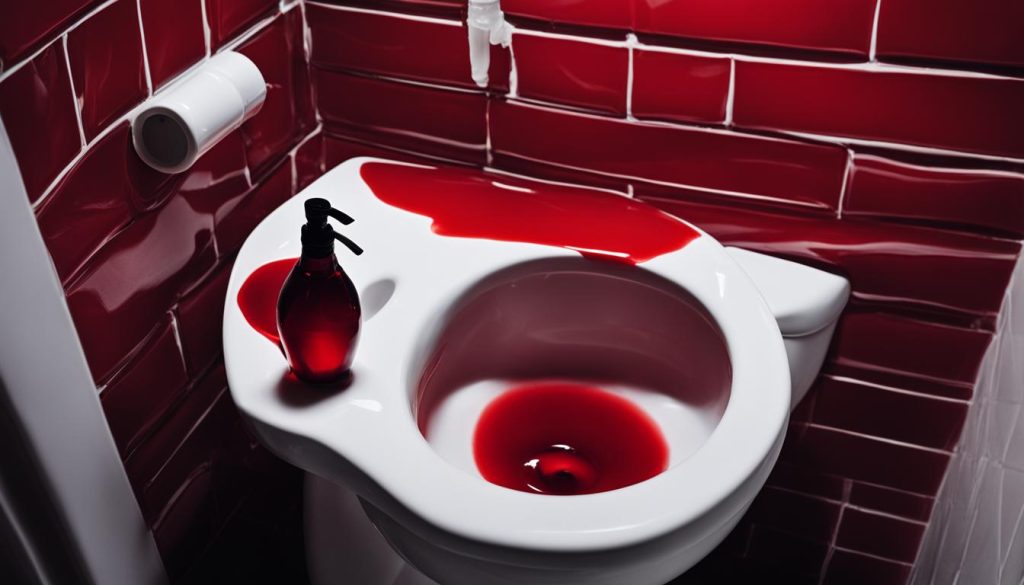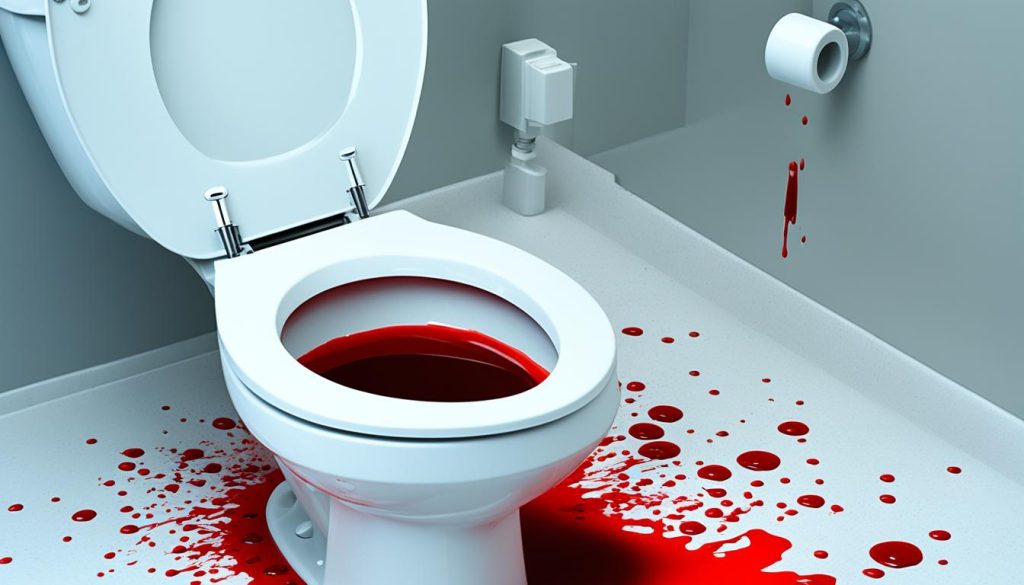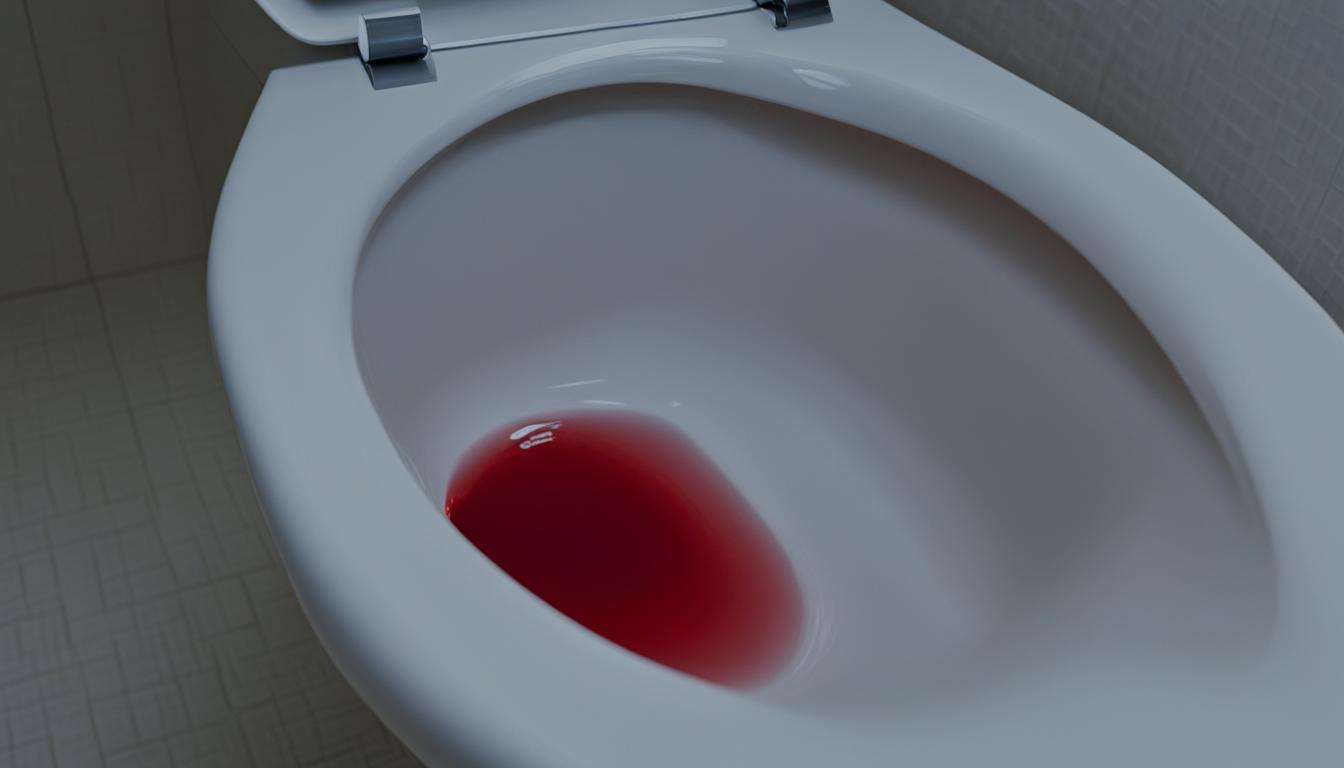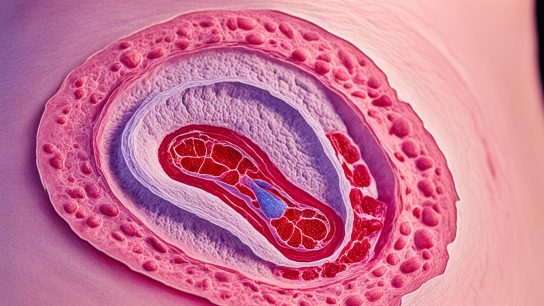Rectal bleeding, characterized by a large amount of bright red blood in the toilet with no pain, can be a concerning symptom. It can be caused by various conditions, including hemorrhoids, anal fissures, inflammatory bowel disease (IBD), and colorectal cancer. It is important to determine the underlying cause of rectal bleeding for appropriate treatment. The appearance of the blood, such as fresh blood on toilet paper or bright red, dark red, or tarry black blood in the toilet, can provide clues to the location of the bleeding within the gastrointestinal tract.
When you experience blood in the toilet with no pain, it’s essential to understand the possible causes, what it means, and when to seek medical attention. In this article, we will explore the various reasons behind blood in the toilet with no pain, the differences in its appearance, and how to manage this concerning symptom. Understanding these aspects will help you make informed decisions regarding your health.
What Causes Blood in Toilet No Pain?
The presence of blood in the toilet without any accompanying pain can be a cause for concern. It could indicate an underlying condition that requires attention. Here are some common causes of blood in the toilet with no pain:
- Hemorrhoids: Swollen blood vessels in the rectum or anus can often cause bright red blood in the toilet. These are typically painless and relatively harmless.
- Anal fissures: Small tears in the lining of the anus can result in bleeding when passing stool. Although they can be painful, they don’t always cause discomfort.
- Polyps or growths: Abnormal growths in the colon or rectum can sometimes bleed, even without pain. These growths may vary in size and can be either benign or cancerous.
- Diverticulosis: Diverticula are small bulging pouches that can form in the lining of the digestive tract, particularly the colon. Occasionally, these pouches can bleed.
- Colorectal cancer: In some cases, blood in the toilet with no pain can indicate the presence of colorectal cancer. It’s essential to get evaluated by a healthcare professional to rule out this possibility.
If you notice blood in the toilet without any associated pain, it’s recommended to consult your doctor for further examination and diagnosis. They can determine the underlying cause and provide appropriate treatment.

What Does Bright Red Blood in Toilet No Pain Mean?
Bright red blood in the toilet with no pain is a concerning symptom that often signals bleeding from the colon or rectum, near the end of the digestive tract. This type of rectal bleeding is typically caused by various conditions, including:
- Hemorrhoids: Swollen blood vessels in the rectum or anus can result in bright red blood in the toilet. Hemorrhoids are a common cause of rectal bleeding and are often accompanied by discomfort or itching.
- Anal fissures: Small tears or cracks in the lining of the anus can cause bleeding during bowel movements. Anal fissures are usually the result of trauma or straining during bowel movements.
- Bowel infection: Infections in the bowel, such as bacterial or viral gastroenteritis, can lead to rectal bleeding. These infections often cause other symptoms like diarrhea, abdominal pain, and fever.
- Bowel inflammation: Conditions like inflammatory bowel disease (IBD), including Crohn’s disease and ulcerative colitis, can cause inflammation in the colon or rectum, leading to rectal bleeding.
- Polyps or cancer: Growths in the colon, such as polyps or colorectal cancer, can result in bright red blood in the toilet. While less common than other causes, it’s important to consider these possibilities, especially in older individuals or those with a family history of colon cancer.
Proper treatment for bright red blood in the toilet depends on identifying the underlying cause. It is essential to consult a healthcare provider for a thorough evaluation and accurate diagnosis. Treatment options may include topical creams, dietary modifications, medication, or, in more severe cases, surgical interventions.
To gain a better understanding, let’s take a look at the table below which summarizes the main causes of bright red blood in the toilet:
| Cause | Description |
|---|---|
| Hemorrhoids | Swollen blood vessels in the rectum or anus |
| Anal fissures | Small tears or cracks in the lining of the anus |
| Bowel infection | Infections in the bowel, such as bacterial or viral gastroenteritis |
| Bowel inflammation | Conditions like inflammatory bowel disease (IBD) |
| Polyps or cancer | Growths in the colon |
Understanding the potential causes of bright red blood in the toilet can help guide treatment decisions and ensure appropriate care. It’s important to address this symptom promptly to determine the underlying cause and receive adequate treatment. Remember to consult with a healthcare professional for personalized advice and guidance.
When to Worry About Blood in Toilet No Pain?
While blood in the toilet with no pain is often not a cause for immediate concern, there are situations when it is important to seek medical attention. You should worry about blood in the toilet with no pain if:
- The bleeding persists for more than a few days or becomes more frequent
- The amount of blood increases or there is a large amount of blood in the toilet
- The blood is accompanied by other symptoms such as abdominal pain, changes in bowel movements, weight loss, or fatigue
- You have a family history of colorectal cancer or inflammatory bowel disease
- You are over the age of 50 and have never had a colonoscopy
If you experience any of these situations, it is essential to consult a healthcare professional for further evaluation and appropriate treatment. Remember, early detection of the underlying cause is key to managing the condition effectively.
| Situation | Action to Take |
|---|---|
| The bleeding persists for more than a few days or becomes more frequent | Schedule an appointment with a healthcare provider to determine the cause and appropriate treatment. |
| The amount of blood increases or there is a large amount of blood in the toilet | Seek immediate medical attention, as this may indicate a more severe underlying condition. |
| The blood is accompanied by other symptoms such as abdominal pain, changes in bowel movements, weight loss, or fatigue | Consult a healthcare professional to assess the symptoms and recommend further evaluation. |
| You have a family history of colorectal cancer or inflammatory bowel disease | Discuss your family history with a healthcare provider, who may recommend screening tests or preventive measures. |
| You are over the age of 50 and have never had a colonoscopy | Arrange for a colonoscopy to screen for colorectal cancer or other potential causes of rectal bleeding. |
Remember, it is always better to err on the side of caution when it comes to your health. Seeking timely medical attention for blood in the toilet with no pain can help ensure appropriate diagnosis and treatment.
Take Action for Your Health
Don’t ignore concerning symptoms like blood in the toilet with no pain. Early detection and intervention play a crucial role in managing and treating underlying conditions effectively. Be proactive in seeking medical attention and discussing your concerns with a healthcare professional.

Possible Causes of Blood in Stool
Blood in the stool can be a concerning symptom, indicating a range of minor to more serious underlying conditions. Identifying the cause of blood in the stool is crucial for appropriate medical evaluation and treatment.
Hemorrhoids
One possible cause of blood in the stool is hemorrhoids. These are swollen blood vessels in the rectum or anus that can bleed and cause discomfort. Hemorrhoids are often caused by straining during bowel movements, chronic constipation, or prolonged sitting.
Anal Fissures
Anal fissures are small tears in the lining of the anus, which can lead to bright red blood in the stool. They are commonly caused by passing large, hard stools or by anal trauma during childbirth.
Infections in the Bowel
Infections in the bowel, such as bacterial or viral infections, can cause blood in the stool. These infections can be accompanied by symptoms like diarrhea, stomach cramps, and fever.
Inflammation in the Bowel
Inflammatory bowel diseases (IBD) like Crohn’s disease and ulcerative colitis can cause inflammation in the bowel, leading to bleeding and blood in the stool. These conditions are chronic and can also cause other symptoms like abdominal pain, diarrhea, and weight loss.
Polyps or Cancer in the Colon
Polyps are abnormal growths in the colon that can bleed and cause blood in the stool. In some cases, blood in the stool can indicate the presence of colorectal cancer, especially if accompanied by other symptoms like unexplained weight loss and changes in bowel habits.

If you notice blood in your stool, it’s important to consult a healthcare professional for proper diagnosis and treatment. They will be able to assess your symptoms, perform any necessary tests or procedures, and guide you towards the most appropriate course of action.
Testing and Diagnosis
Diagnosing the cause of blood in the toilet with no pain may involve various tests to determine the underlying condition. These tests provide valuable information for accurate diagnosis and appropriate treatment. Some common tests used for blood in the toilet with no pain include:
- Physical examination: A healthcare provider will perform a thorough examination, including a visual examination of the anus and rectum, to look for any signs of hemorrhoids, anal fissures, or other abnormalities.
- Stool sample analysis: A stool sample may be collected to check for any signs of infection, inflammation, or blood in the stool. The sample is sent to a laboratory for further analysis.
- Colonoscopy: A colonoscopy is a procedure that allows a healthcare provider to examine the entire colon and rectum using a flexible tube with a camera. It helps identify any abnormalities, such as polyps, inflammation, or signs of cancer.
- Sigmoidoscopy: Similar to a colonoscopy, a sigmoidoscopy is a procedure that examines the lower part of the colon and rectum. It can help identify sources of bleeding or other abnormalities.
- Barium enema: This test involves filling the colon with a contrast material called barium. X-rays are then taken to visualize the colon and identify any abnormalities.
These tests are essential in determining the cause of blood in the toilet with no pain. The healthcare provider will recommend the most appropriate tests based on the individual’s symptoms and medical history.

| Test | Purpose |
|---|---|
| Physical examination | To visually inspect the anus and rectum for abnormalities |
| Stool sample analysis | To check for signs of infection, inflammation, or blood in the stool |
| Colonoscopy | To examine the entire colon and rectum for abnormalities, such as polyps or signs of cancer |
| Sigmoidoscopy | To examine the lower part of the colon and rectum for sources of bleeding or abnormalities |
| Barium enema | To visualize the colon and identify abnormalities using X-rays after filling with barium |
Treatment and Management
The treatment for blood in the toilet with no pain will depend on the underlying cause. Common treatment options include:
- 1. Hemorrhoid creams and suppositories: Over-the-counter creams, ointments, and suppositories containing ingredients like hydrocortisone can help relieve symptoms and reduce inflammation for hemorrhoids, a common cause of blood in the toilet.
- 2. Warm baths: Soaking in warm water for 10 to 15 minutes several times a day can soothe irritation and promote healing for conditions such as hemorrhoids or anal fissures.
- 3. Fiber supplements: Increasing dietary fiber or taking fiber supplements can help soften the stool and reduce strain during bowel movements, which may alleviate symptoms of hemorrhoids and prevent their recurrence.
- 4. Sitz baths: A sitz bath is a shallow basin filled with warm water that fits over the toilet. Sitting in a sitz bath for 15 to 20 minutes can provide relief and promote healing for various conditions that cause blood in the toilet.
- 5. Medications: In cases of inflammatory bowel disease (IBD), such as Crohn’s disease or ulcerative colitis, medications like corticosteroids, immunosuppressants, or biologic agents may be prescribed to manage inflammation and reduce symptoms, including rectal bleeding.
- 6. Surgical procedures: Severe or persistent cases of blood in the toilet may require surgical intervention. Procedures such as rubber band ligation, sclerotherapy, or hemorrhoidectomy may be performed to treat hemorrhoids or other underlying causes.
It is essential to consult a healthcare professional for a proper diagnosis and personalized treatment plan based on the specific cause of blood in the toilet with no pain. They can provide guidance, monitor your condition, and recommend the most appropriate treatment options.
Conclusion
Blood in the toilet with no pain can be a distressing symptom that requires medical attention. While most cases of blood in the toilet with no pain are not life-threatening, it is important to rule out any serious underlying conditions. Early detection and appropriate management can lead to better outcomes and reduce potential complications.
If you notice bright red blood in the toilet or on the toilet paper, it is essential to consult a healthcare provider for proper diagnosis and treatment. They can determine the cause of the bleeding and recommend the appropriate remedies or interventions.
Remember, self-diagnosis and treatment are not recommended in these situations. Only a healthcare professional can provide an accurate diagnosis based on your specific symptoms and medical history.
If you experience blood in the toilet with no pain or any other concerning symptoms, don’t hesitate to seek medical advice. Your healthcare provider can guide you through the necessary steps to ensure your well-being.
FAQ
1. What can cause a large amount of bright red blood in the toilet with no pain?
Rectal bleeding with a large amount of bright red blood in the toilet with no pain can be caused by various conditions, including hemorrhoids, anal fissures, inflammatory bowel disease (IBD), and colorectal cancer.
2. What does bright red blood in the toilet with no pain indicate?
Bright red blood in the toilet with no pain typically indicates that the bleeding originates from the colon or rectum, near the end of the digestive tract. Common causes include hemorrhoids, anal fissures, infection in the bowel, inflammation in the bowel, and polyps or cancer in the colon.
3. When should I worry about blood in the toilet with no pain?
While blood in the toilet with no pain is often not a cause for immediate concern, it is important to seek medical attention if you experience persistent or recurrent bleeding, if the bleeding is accompanied by other concerning symptoms, or if you have a personal or family history of colorectal cancer.
4. What are possible causes of blood in the stool?
Blood in the stool can have various causes, including hemorrhoids, anal fissures, infections in the bowel, inflammation in the bowel (such as diverticular disease and inflammatory bowel disease), and polyps or cancer in the colon.
5. How is the cause of blood in the toilet with no pain diagnosed?
Diagnosing the cause of blood in the toilet with no pain may involve tests such as a physical examination, a review of medical history, blood tests, stool tests, colonoscopy, sigmoidoscopy, or imaging studies.
6. What are the treatment options for blood in the toilet with no pain?
The treatment for blood in the toilet with no pain will depend on the underlying cause. Common treatment options include lifestyle changes, topical medications, fiber supplements, over-the-counter creams or ointments, prescription medications, and, in some cases, surgical interventions.
7. What can I do at home to manage blood in the toilet with no pain?
It is important to consult a healthcare provider for proper diagnosis and treatment. However, some home remedies that may help manage blood in the toilet with no pain include increasing fiber intake, staying hydrated, practicing good anal hygiene, and avoiding constipation or straining during bowel movements.




